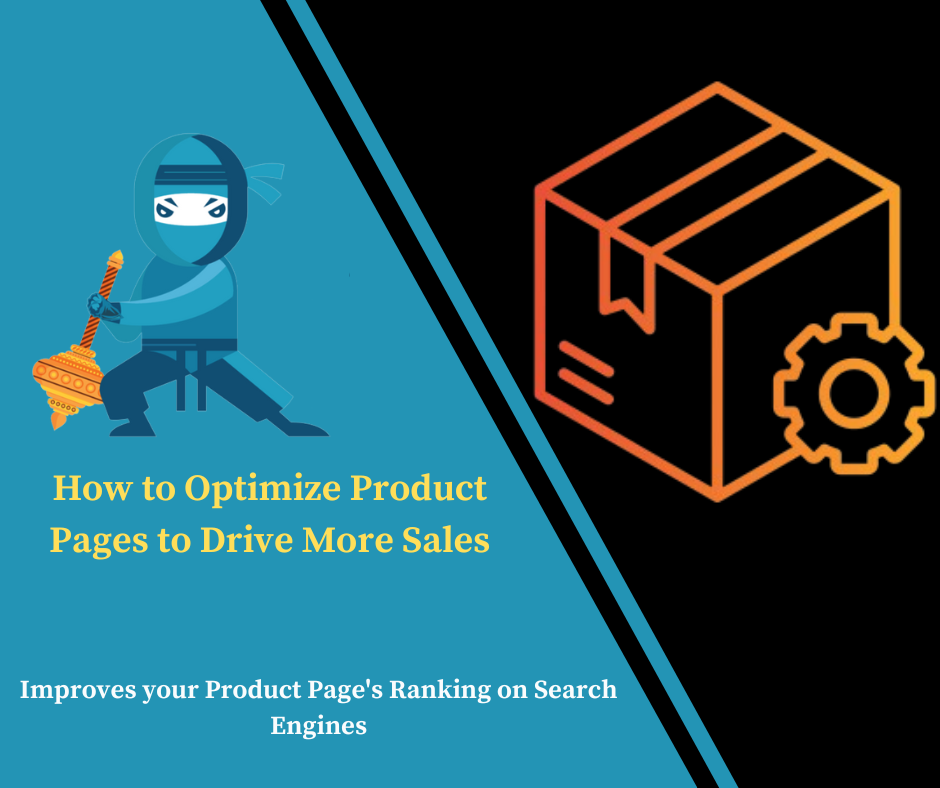How to Optimize Product Pages to Drive More Sales
In the competitive world of e-commerce, optimizing product pages is crucial for driving sales and enhancing the customer experience. Product pages are the digital storefront of your business, and their effectiveness can significantly impact conversion rates. This article will guide you through strategies to optimize your product pages, focusing on key elements that drive sales and improve user engagement.
1. Craft Compelling Product Descriptions
One of the most critical elements of a product page is the product description. This is your opportunity to convey the value of the product and persuade customers to make a purchase. Here’s how to optimize product descriptions:
Be Detailed and Specific: Include essential details such as size, color, material, and any unique features. The more information you provide, the better customers can understand what they are buying.
Use Persuasive Language: Highlight the benefits of the product and how it solves a problem or fulfills a need. Use powerful words that evoke emotion and create a sense of urgency.
Incorporate Keywords: Utilize relevant keywords, such as or naturally within the description. This can improve your page’s SEO and help attract organic traffic.

2. High-Quality Product Images and Videos
Visuals are crucial in e-commerce because they help customers visualize the product. High-quality images and videos can significantly impact purchasing decisions:
Use Multiple Images: Provide images from various angles and in different settings if possible. This helps customers get a comprehensive view of the product.
Implement Zoom Features: Allow customers to zoom in on images to see finer details. This can be especially important for products with intricate designs or textures.
Add Videos: Product videos can be highly effective in demonstrating how a product works or showcasing its features. Consider including product demonstrations, unboxings, or customer testimonials.
3. Optimize Product Page Layout
A well-organized product page enhances user experience and makes it easier for customers to find the information they need:
Clear and Concise Layout: Arrange elements such as product title, price, description, and images in a clean, logical order. Avoid clutter and make sure key information is easily accessible.
Incorporate Calls-to-Action (CTAs): Use clear and compelling CTAs like “Buy Now Learn More.” Ensure these buttons are prominently displayed and easily clickable.
Include Product Specifications: Create a dedicated section for technical specifications or detailed product attributes. This can be particularly useful for technical or complex products.
Also read: Why Website Speed Matters and How to Improve It in 2024
4. Implement Customer Reviews and Ratings
Customer reviews and ratings can significantly influence purchasing decisions and build trust:
Showcase Reviews: Display customer reviews prominently on your product page. Positive reviews can reassure potential buyers and encourage them to make a purchase.
Encourage Reviews: Follow up with customers after purchase and encourage them to leave reviews. Consider offering incentives for honest feedback.
Respond to Reviews: Engage with customers by responding to reviews, both positive and negative. This shows that you value their feedback and are committed to customer satisfaction.
5. Enhance Page Load Speed
A slow-loading product page can lead to higher bounce rates and lost sales. Optimize your page’s load speed with these tips:
Optimize Images: Compress images without sacrificing quality to reduce load times. Use image formats like WebP for better performance.
Minimize HTTP Requests: Reduce the number of elements on the page that require HTTP requests, such as scripts and stylesheets.
Leverage Browser Caching: Enable browser caching to allow returning visitors to load the page faster by storing static resources locally.
6. Utilize Product Recommendations
Product recommendations can increase average order value and drive additional sales:
Suggest Related Products: Display related or complementary products on the product page. For example, if a customer is viewing a camera, suggest camera accessories.
Showcase Best Sellers: Highlight popular products or bestsellers to guide customers towards items that other shoppers frequently purchase.
Personalize Recommendations: Use data-driven insights to personalize product recommendations based on customer behavior and preferences.
7. Ensure Mobile Optimization
With the increasing use of mobile devices for shopping, ensuring your product pages are mobile-friendly is essential:
Responsive Design: Use responsive design techniques to ensure your product page looks and functions well on various screen sizes and devices.
Optimize Touch Interactions: Make sure buttons and links are easy to click on mobile devices. Avoid small buttons or links that can be difficult to interact with.
Streamline Checkout: Simplify the checkout process for mobile users by minimizing the number of steps and using autofill options.
FAQ
Why are product descriptions important for sales?
Product descriptions are crucial because they provide detailed information about the product, highlight its benefits, and persuade customers to make a purchase. Well-written descriptions can also improve search engine rankings by incorporating relevant keywords.
How many images should I include on a product page?
It’s recommended to include multiple images of a product from different angles and in various settings. This allows customers to get a comprehensive view of the product and helps them make more informed purchase decisions.
What should I include in a product video?
A product video should demonstrate the product in use, highlight key features and benefits, and address any common questions or concerns. Consider including testimonials or reviews from customers to add credibility.
How can I improve my product page’s load speed?
To improve load speed, optimize images by compressing them, minimize HTTP requests by reducing unnecessary elements, and leverage browser caching to speed up page loading for returning visitors.
What role do customer reviews play in optimizing product pages?
Customer reviews build trust and credibility, influence purchasing decisions, and provide social proof. Displaying reviews on product pages can help reassure potential buyers and encourage them to make a purchase.
Conclusion
In summary, optimizing product pages is a crucial strategy for driving more sales and improving the overall customer experience. By focusing on detailed and persuasive product descriptions, high-quality visuals, a clear and user-friendly layout, and customer reviews, you can enhance the effectiveness of your product pages. Additionally, ensuring fast load times, leveraging product recommendations, and optimizing for mobile devices are key factors that contribute to increased conversions. Regularly refining these elements based on performance data and user feedback will help you stay competitive and achieve higher sales. Implement these strategies to transform your product pages into powerful sales tools that attract and retain customers.








